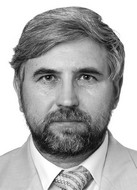Healthy lifestyle among priorities of Middle-Urals urban youth in context of social security
Фотографии:
ˑ:
Teoriya i praktika fizicheskoy kultury №1 2018, pp.9-12
PhD D.Y. Narkhov1
Dr.Sc.Phil., Professor Y.R. Vishnevskiy1
PhD, Associate Professor I.M. Dobrynin1
PhD, Associate Professor E.N. Narkhova1
1Ural Federal University (UrFU), Ekaterinburg
Objective of the study was to analyze variations in the young peoples’ behavioural models and lifestyles that are known to have degraded for the last 25 years to the self-destructive rather than self-protective models, and rate the values-driven behavioural models. The study analyses the sociological aspects and meanings of such notions as the ‘healthy lifestyle’ (HLS) and ‘physical culture’ in application to the modern regional youth communities, and the key components of such meanings. The study methods were based on the resource- and risks-focused approaches with the youth viewed as the national strategic resource with its health being pivotal for success of the social development and security policies. Subject to the study was the 14-30 year old urban population of the Sverdlovsk region. A questioning survey under the study was designed to rate the degrees of engagement in habitual physical culture, motivations and conditions for and attitudes to the physical education as a subject of curricula. The survey data were applied to rate the key risks for the personal security and exposure to the prevailing diseases. Based on the study data and analyses, the authors found the gap between the verbal recognition of the self-protection behavioural models and practical values-driven behaviours of the Middle-Urals youth being slowly but persistenly bridged.
Keywords: physical education, healthy lifestyle, youth, students, diseases, social security.
References
- Baronenko V.A., Rapoport L.A Zdorovye i fizicheskaya kultura studenta [Student's health and physical culture]. 2nd ed. Moscow: INFRA-M publ., 2012, 336 p.
- Belova O.R., Boronina L.N., Vishnevskiy Y.R. et al. Valeologicheskaya i fizicheskaya kultura: teoretiko-metodologicheskiy analiz [Valeological and physical culture: theoretical and methodological analysis]. Izvestiya Uralskogo federalnogo universiteta. Seriya 1: Problemy obrazovaniya, nauki i kultury, 2013, vol. 113, no. 2, pp. 123-131.
- Biserov V.V., Rukina I.V., Mukhtarova T.L. et al. Fizicheskaya kultura. Ucheb. posobie [Physical education. Study guide]. Ekaterinburg: USTU-UPI publ., 2008, 275 p.
- Dobrynin I.M., Narkhov D.Y., Narkhova E.N. et al. Fizicheskaya kultura kak uchebnaya distsiplina i obraz zhizni v predstavleniyakh sovremennykh studentov [Physical Education as academic discipline and way of life according to modern students]. Vestnik Nizhegorodskogo un-ta im. N.I. Lobachevskogo. Seriya: Sotsialnye nauki, 2016, no. 2, pp. 159-167.
- Drobizheva L.M. Tsennosti zdorovya i kultura nezdorovya v Rossii [Health values and bad health culture in Russia]. Bezopasnost Evrazii, 2004, no. 1, pp. 33-43.
- Kogan L.N. Teoriya kultury [Culture Theory]. Ekaterinburg: USU publ., 1993, 160 p.
- Osnovy gosudarstvennoy molodezhnoy politiki Rossiyskoy Federatsii na period do 2025 goda. Utverzhdeny rasporyazheniem Pravitelstva Rossiyskoy Federatsii ot 29 noyabrya 2014 g. no. 2403-r. [Fundamentals of the state youth policy of the Russian Federation for the period until 2025. Approved by the order of the Government of the Russian Federation dated November 29, 2014 no. 2403-r.]. Available at: https://fadm.gov.ru/documents/download/25/ (data obrascheniya 02.09.2017).
- Vishnevskiy Y.R. Otnoshenie zhiteley Sverdlovskoy oblasti k fizicheskoy kulture i sportu: itogi sotsiologicheskogo monitoringa [Attitude of Sverdlovsk region residents to physical culture and sports: results of sociological monitoring]. Ekaterinburg: UU publ., 2013, 324 p.
- Plan meropriyatiy Federalnogo agentstva po delam molodezhi v sfere realizatsii gosudarstvennoy molodezhnoy politiki na territorii Rossiyskoy Federatsii na 2017 god [Action plan of the Federal Agency for Youth Affairs in the sphere of implementation of the state youth policy on the territory of the Russian Federation for 2017]. Available at: https://fadm.gov.ru/activity/scope/7/details (data obrascheniya 10.05.2017).
- Vishnevskiy Y.R. Polozhenie molodezhi Sverdlovskoy oblasti v 2014 godu: nauchnye osnovy doklada pravitelstvu Sverdlovskoy oblasti [Situation with youth in the Sverdlovsk region in 2014: scientific basis of the report to the government of the Sverdlovsk region]. Ekaterinburg: EMC-PI publ., 2016, 350 p.
- Strategiya razvitiya fizicheskoy kultury i sporta v Rossiyskoy Federatsii na period do 2020 goda. Utverzhdena rasporyazheniem Pravitelstva Rossiyskoy Federatsii ot 7 avgusta 2009 goda no. 1101-r. [The strategy of development of physical culture and sports in the Russian Federation for the period until 2020. Approved by the order of the Government of the Russian Federation dated August 7, 2009 no. 1101-r.]. Official Internet portal of legal information. Available at: http://pravo.gov.ru (data obrascheniya 02.07.2017).
- Suslov F.P., Tyshler D.A. Terminologiya sporta: tolkovy slovar sportivnykh terminov (okolo 9500 terminov) [Sports terminology: explanatory dictionary of sports terms (appr. 9,500 terms)]. Moscow: SportAkademPress publ., 2001, 480 p.




 Журнал "THEORY AND PRACTICE
Журнал "THEORY AND PRACTICE